#commercial solar system provider
Text
Residential Solar Systems | Solar Panel for Your Home
Euro Solar System is a leading rooftop solar Installation company that specializes in providing high-quality solar systems to residential, Commercial, and Industrial clients. A rooftop solar system is a sustainable and cost-effective way to generate electricity for residential area. One of the greatest benefits of installing Solar Panels on the roof is that they provide cost savings. Looking for the best solar installation company for your Home? Look no further than Euro Solar System, India’s leading rooftop solar company! Contact us 1800 890 3052 today to learn more about how solar energy can benefit your home.
#solar company#best solar system for home#solar systems#rooftop solar system#solar panel installation#solar panels#residential solar power installations#commercial solar system provider
0 notes
Text
Finding The Passionate And Best Solar Installers Melbourne
If you are looking for the best solar installation services for your home or business, look no further than our company, Green Edge Technologies. We have a team of highly skilled solar installers working day in and day out to ensure that all new installations are on time, meet all safety regulations, and provide customers with excellent value for money. We aim to provide our customers with the best possible solar installation services at a competitive price. We will work closely with you to ensure your needs are fulfilled, whether a small residential installation or a large commercial one. Contact us for more details about Best Solar Installers Melbourne.

#4kw solar system#solar monitoring system#10kw solar#solar energy companies#15kw solar system price#solar panel installations near me#30kw solar system with battery#commercial and industrial solar#solar for business melbourne#best solar providers melbourne#20kw off grid solar system#solar power north melbourne#solar panel installations boxhil
2 notes
·
View notes
Text
#Top 10 Power Supply Manufacturers in India#Power Supply Manufacturers in Ahmedabad#DC Power Supply Manufacturers in Ahmedabad#AC Power Supply Manufacturers in Ahmedabad#Electronic Power Supply Manufacturers in Ahmedabad#Electrical Power Supply Manufacturers in Ahmedabad#Industrial Power Supply Manufacturers in Ahmedabad#Commercial Power Supply Manufacturers in Ahmedabad#Domestic Power Supply Manufacturers in Ahmedabad#Renewable Energy Power Supply Manufacturers in Ahmedabad#Solar Power Supply Manufacturers in Ahmedabad#UPS System Manufacturers in Ahmedabad#Inverter Manufacturers in Ahmedabad#Battery Manufacturers in Ahmedabad#Charger Manufacturers in Ahmedabad#Power Solution Providers in Ahmedabad
0 notes
Text
Sunline Energy is a leading solar power provider in Melbourne. We offer a complete range of services, including:
- Sungrow inverter installation
- Sungrow solar panel installation

Sunline Energy is a leading provider of solar energy solutions in Melbourne. We are proud to offer Goodwe Inverters,Longi solar panels , and other solar-related products.
We have been a prominent provider of solar energy solutions since 2005. Our commitment to excellence has made us one of the most trusted names in the industry. We provide our customers with high quality products and services at competitive prices.
If you are looking for an experienced company, look no further than Sunline Energy!
If you're looking to install solar panels in your home or business, sunline energy is here to help. We can help you choose the best solar panel brand for your needs and budget.
Sunline Energy offers a wide range of inverters, from small portable models to high-output models that can be installed on rooftops. We also offer a wide variety of solar panels, from single-panel models to larger arrays that can power multiple homes.
When choosing a solar panel brand, there are a few things you should consider:
• What kind of performance does the product offer?
• How easy is it to install?
• How much does it cost?
• What are the environmental impacts of using this product?
Sunline Energy is a company that specializes in solar power systems for homes and businesses. The company provides complete turnkey solutions for residential and commercial solar power systems, from installation to maintenance and financing. Visit our website www.sunlineenergy.com.au
#solar panels in melbourne#solar Panels installation#install solar panels melbourne#best solar panel installers melbourn#cheap solar panels in melbourne#solar panel installation melbourne#solar system for house#All branded inverter#solar panel inverter#inverters for solar panels#Tesla Battery Melbourne#goodwe battery melbourne#battery for home#energy provider melbourne comparison#solar ev charger australia#heat pump hot water systems melbourne#heat pump melbourne#commercial real estate melbourne#Commercial melbourne#commercial systems australia
1 note
·
View note
Text
Solar Panel Energy Systems

A Melbourne solar panel energy system is an ideal option if you are looking to save money on your power bills. In recent years, wholesale electricity prices have skyrocketed, affecting consumers through retailers. Residents are encouraged to install solar packages to save money by obtaining a fixed rate of consumption. While this may seem like an expensive and time-consuming process, it will save you money in the long run. With a Melbourne solar panel energy system, you can benefit from a tax rebate of up to 30%.
There are several solar energy systems in Melbourne offering various packages for different needs. Gnowee Solar, for example, offers a comprehensive solar solution for homes, as well as a quote in two business days. Life Solar is another Melbourne solar provider, with a highly qualified team of experts. It is also an accredited member of the Clean Energy Council and offers solar solutions for both commercial and residential properties. If you have any questions about solar panel energy systems, contact these providers today!
Getting a solar panel installation in Melbourne will allow you to reduce your dependency on the power grid and save hundreds or even thousands of dollars a year. Although Melbourne is located in the southern half of Australia, it receives enough sun throughout the year to produce sufficient amounts of electricity. In addition, solar panel prices in Melbourne are typically lower than the national average. You can even find great value solar panel prices from Captain Green! And remember, the initial investment of solar panels isn't expensive if you plan on selling them!
#solar energy systems Melbourne#solar panel providers Melbourne#commercial solar power#solar power maintenance#residential solar solutions#solar energy services Melbourne
0 notes
Text
Space Station Concepts: Space Operations Center
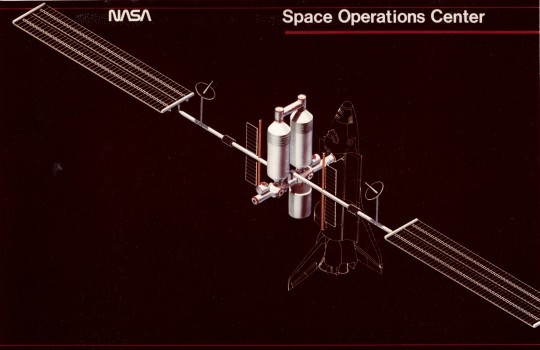

"The SOC is a self-contained orbital facility built up of several Shuttle-launched modules. With resupply, on-orbit refurbish- ment and orbit maintenance, it is capable of continuous operation for an indefinite period. In the nominal operational mode, the SOC is manned continuously, but unmanned operation is possible.

The present mission management and control process is characterized by a people-intensive ground monitoring and control operation involving large supporting ground information and control facilities and a highly- integrated ground-flight crew operation. In order to reduce dependence on Earth monitoring and control, the SOC would have to provide for increased systems monitoring; fault isolation and failure analysis, and the ability to store and call up extensive sets of data to support the onboard control of the vehicle; and the onboard capability for daily mission and other activity planning."
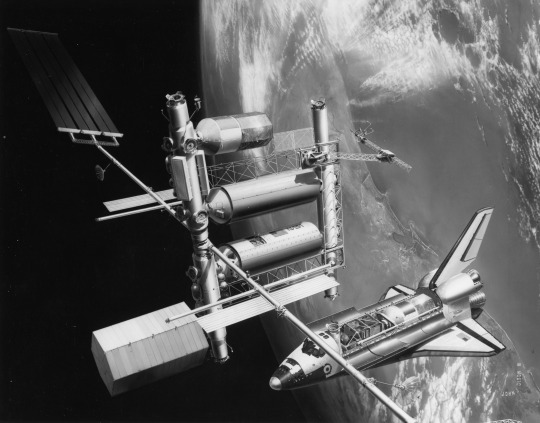

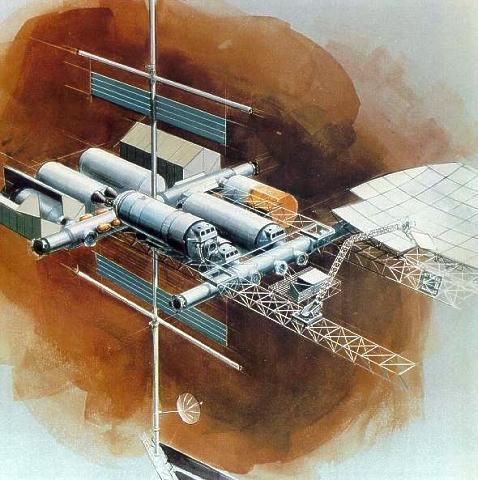
"Like most other space station studies from the mid/late 1970s its primary mission was the assembly and servicing of large spacecraft in Earth orbit -- not science. NASA/JSC signed a contract with Boeing in 1980 to further develop the design. Like most NASA space station plans, SOC would be assembled in orbit from modules launched on the Space Shuttle. The crew's tour of duty would have been 90 days. NASA originally estimated the total cost to be $2.7 billion, but the estimated cost had increased to $4.7 billion by 1981. SOC would have been operational by 1990.
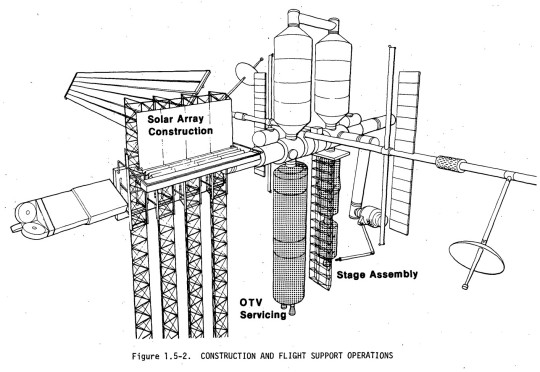
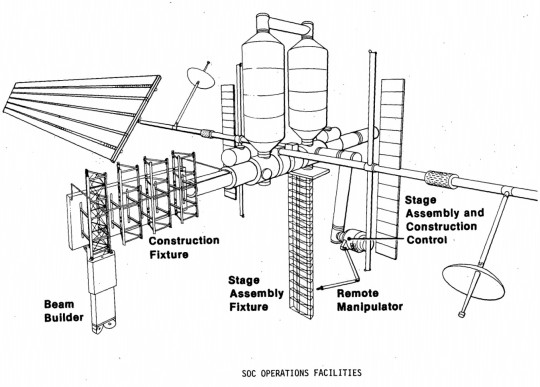

NASA's Johnson Spaceflight Center extended the Boeing contract in February 1982 to study a cheaper, modular, evolutionary approach to assembling the Space Operations Center. An initial power module would consist of solar arrays and radiators. The next launches would have delivered a space tug 'garage', two pressurized crew modules and a logistics module. The completed Space Operations Center also would have contained a satellite servicing and assembly facility and several laboratory modules. Even with this revised approach, however, the cost of the SOC program had grown to $9 billion. Another problem was Space Operations Center's primary mission: spacecraft assembly and servicing. The likely users (commercial satellite operators and telecommunications companies) were not really interested in the kind of large geostationary space platforms proposed by NASA. By 1983, the only enthusiastic users for NASA's space station plans were scientists working in the fields of microgravity research and life sciences. Their needs would dictate future space station design although NASA's 1984 station plans did incorporate a SOC-type spacecraft servicing facility as well."
Article by Marcus Lindroos, from astronautix.com: link

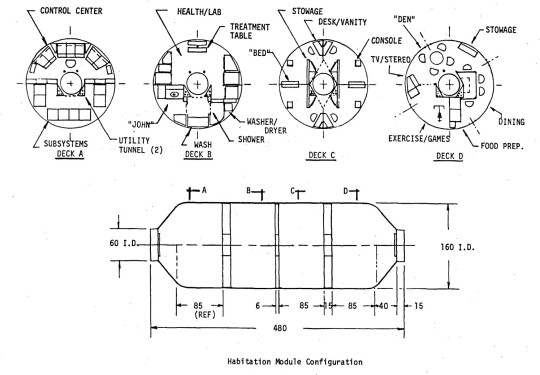


NASA ID: link, S79-10137
Boeing photo no. R-1859, link, link
#Space Operations Center#Space Station Freedom#Space Station Concept#Space Station#Concept Art#Space Station Program#Space#Earth#Space Shuttle#Orbiter#NASA#Space Shuttle Program#1979#1980s#my post
452 notes
·
View notes
Text

Damages to Physical Structures Estimated at $18.5 billion as of end January
WASHINGTON, April 2, 2024 – The cost of damage to critical infrastructure in Gaza is estimated at around $18.5 billion according to a new report released today by the World Bank and the United Nations, with financial support of the European Union. That is equivalent to 97% of the combined GDP of the West Bank and Gaza in 2022.
The Interim Damage Assessment report used remote data collection sources to measure damage to physical infrastructure in critical sectors incurred between October 2023 and end of January 2024. The report finds that damage to structures affects every sector of the economy. Housing accounts for 72% of the costs. Public service infrastructure such as water, health and education account for 19%, and damages to commercial and industrial buildings account for 9%. For several sectors, the rate of damage appears to be leveling off as few assets remain intact. An estimated 26 million tons of debris and rubble have been left in the wake of the destruction, an amount that is estimated to take years to remove.
The report also looks at the impact on the people of Gaza. More than half the population of Gaza is on the brink of famine and the entire population is experiencing acute food insecurity and malnutrition. Over a million people are without homes and 75% of the population is displaced. Catastrophic cumulative impacts on physical and mental health have hit women, children, the elderly, and persons with disabilities the hardest, with the youngest children anticipated to be facing life-long consequences to their development.
With 84% of health facilities damaged or destroyed, and a lack of electricity and water to operate remaining facilities, the population has minimal access to health care, medicine, or life-saving treatments. The water and sanitation system has nearly collapsed, delivering less than 5% of its previous output, with people dependent on limited water rations for survival. The education system has collapsed, with 100% of children out of school.
The report also points to the impact on power networks as well as solar generated systems and the almost total power blackout since the first week of the conflict. With 92% of primary roads destroyed or damaged and the communications infrastructure seriously impaired, the delivery of basic humanitarian aid to people has become very difficult.
The Interim Damage Assessment Note identifies key actions for early recovery efforts, starting with an increase in humanitarian assistance, food aid and food production; the provision of shelter and rapid, cost-effective, and scalable housing solutions for displaced people; and the resumption of essential services.
About the Gaza Interim Damage Assessment Report
The Gaza Interim Damage Assessment report draws on remote data collection sources and analytics to provide a preliminary estimate of damages to physical structures in Gaza from the conflict in accordance with the Rapid Damage & Needs Assessment (RDNA) methodology. RDNAs follow a globally recognized methodology that has been applied in multiple post-disaster and post-conflict settings. A comprehensive RDNA that assesses economic and social losses, as well as financing needs for recovery and reconstruction, will be completed as soon as the situation allows. The cost of damages, losses and needs estimated through a comprehensive RDNA is expected to be significantly higher than that of an Interim Damage Assessment.
34 notes
·
View notes
Text

WASHINGTON, April 2, 2024 – The cost of damage to critical infrastructure in Gaza is estimated at around $18.5 billion according to a new report released today by the World Bank and the United Nations, with financial support of the European Union. That is equivalent to 97% of the combined GDP of the West Bank and Gaza in 2022.
The Interim Damage Assessment report used remote data collection sources to measure damage to physical infrastructure in critical sectors incurred between October 2023 and end of January 2024. The report finds that damage to structures affects every sector of the economy. Housing accounts for 72% of the costs. Public service infrastructure such as water, health and education account for 19%, and damages to commercial and industrial buildings account for 9%. For several sectors, the rate of damage appears to be leveling off as few assets remain intact. An estimated 26 million tons of debris and rubble have been left in the wake of the destruction, an amount that is estimated to take years to remove.
The report also looks at the impact on the people of Gaza. More than half the population of Gaza is on the brink of famine and the entire population is experiencing acute food insecurity and malnutrition. Over a million people are without homes and 75% of the population is displaced. Catastrophic cumulative impacts on physical and mental health have hit women, children, the elderly, and persons with disabilities the hardest, with the youngest children anticipated to be facing life-long consequences to their development.
With 84% of health facilities damaged or destroyed, and a lack of electricity and water to operate remaining facilities, the population has minimal access to health care, medicine, or life-saving treatments. The water and sanitation system has nearly collapsed, delivering less than 5% of its previous output, with people dependent on limited water rations for survival. The education system has collapsed, with 100% of children out of school.
The report also points to the impact on power networks as well as solar generated systems and the almost total power blackout since the first week of the conflict. With 92% of primary roads destroyed or damaged and the communications infrastructure seriously impaired, the delivery of basic humanitarian aid to people has become very difficult.
The Interim Damage Assessment Note identifies key actions for early recovery efforts, starting with an increase in humanitarian assistance, food aid and food production; the provision of shelter and rapid, cost-effective, and scalable housing solutions for displaced people; and the resumption of essential services.
About the Gaza Interim Damage Assessment Report
The Gaza Interim Damage Assessment report draws on remote data collection sources and analytics to provide a preliminary estimate of damages to physical structures in Gaza from the conflict in accordance with the Rapid Damage & Needs Assessment (RDNA) methodology. RDNAs follow a globally recognized methodology that has been applied in multiple post-disaster and post-conflict settings. A comprehensive RDNA that assesses economic and social losses, as well as financing needs for recovery and reconstruction, will be completed as soon as the situation allows. The cost of damages, losses and needs estimated through a comprehensive RDNA is expected to be significantly higher than that of an Interim Damage Assessment.
21 notes
·
View notes
Text

New SpaceTime out Friday....
SpaceTime 20231020 Series 26 Episode 126
Plot thickens in hunt for ninth planet
A pair of theoretical physicists are reporting that the same observations inspiring the hunt for a ninth planet at the outer edge of the solar system might instead be evidence of a modified law of gravity originally developed to understand the rotation of galaxies.


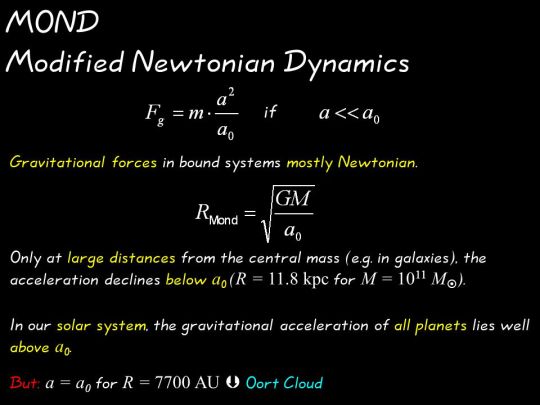

New clues on planetary formation
Astronomers have discovered the youngest hot Jupiter ever seen.

New insights into the atmosphere and star of an exoplanet
Astronomers have failed to find any signs of an atmosphere around the Earth like exoplanet TRAPPIST-1b


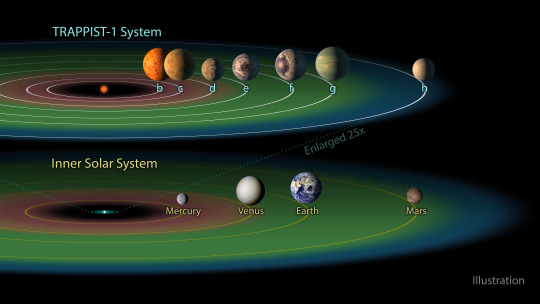
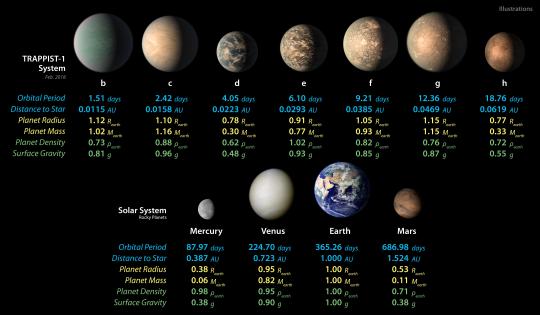
The Science Report
Koala populations decimated by bushfires in recent years.
Study shows 40% of amphibian species around the world are currently under threat.
Scientists have now discovered around 125 mammal species that glow under Ultra Violet light.
Skeptics guide to riding the Sasquatch express

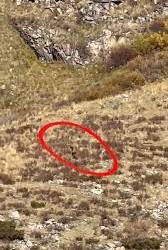



SpaceTime covers the latest news in astronomy & space sciences.
The show is available every Monday, Wednesday and Friday through Apple Podcasts (itunes), Stitcher, Google Podcast, Pocketcasts, SoundCloud, Bitez.com, YouTube, your favourite podcast download provider, and from www.spacetimewithstuartgary.com
SpaceTime is also broadcast through the National Science Foundation on Science Zone Radio and on both i-heart Radio and Tune-In Radio.
SpaceTime daily news blog: http://spacetimewithstuartgary.tumblr.com/
SpaceTime facebook: www.facebook.com/spacetimewithstuartgary
SpaceTime Instagram @spacetimewithstuartgary
SpaceTime twitter feed @stuartgary
SpaceTime YouTube: @SpaceTimewithStuartGary
SpaceTime -- A brief history
SpaceTime is Australia’s most popular and respected astronomy and space science news program – averaging over two million downloads every year. We’re also number five in the United States. The show reports on the latest stories and discoveries making news in astronomy, space flight, and science. SpaceTime features weekly interviews with leading Australian scientists about their research. The show began life in 1995 as ‘StarStuff’ on the Australian Broadcasting Corporation’s (ABC) NewsRadio network. Award winning investigative reporter Stuart Gary created the program during more than fifteen years as NewsRadio’s evening anchor and Science Editor. Gary’s always loved science. He studied astronomy at university and was invited to undertake a PHD in astrophysics, but instead focused on his career in journalism and radio broadcasting. He worked as an announcer and music DJ in commercial radio, before becoming a journalist and eventually joining ABC News and Current Affairs. Later, Gary became part of the team that set up ABC NewsRadio and was one of its first presenters. When asked to put his science background to use, Gary developed StarStuff which he wrote, produced and hosted, consistently achieving 9 per cent of the national Australian radio audience based on the ABC’s Nielsen ratings survey figures for the five major Australian metro markets: Sydney, Melbourne, Brisbane, Adelaide, and Perth. The StarStuff podcast was published on line by ABC Science -- achieving over 1.3 million downloads annually. However, after some 20 years, the show finally wrapped up in December 2015 following ABC funding cuts, and a redirection of available finances to increase sports and horse racing coverage. Rather than continue with the ABC, Gary resigned so that he could keep the show going independently. StarStuff was rebranded as “SpaceTime”, with the first episode being broadcast in February 2016. Over the years, SpaceTime has grown, more than doubling its former ABC audience numbers and expanding to include new segments such as the Science Report -- which provides a wrap of general science news, weekly skeptical science features, special reports looking at the latest computer and technology news, and Skywatch – which provides a monthly guide to the night skies. The show is published three times weekly (every Monday, Wednesday and Friday) and available from the United States National Science Foundation on Science Zone Radio, and through both i-heart Radio and Tune-In Radio.
#science#space#astronomy#physics#news#nasa#esa#astrophysics#spacetimewithstuartgary#starstuff#spacetime
27 notes
·
View notes
Text
Seventy-one per cent of Gaza’s population experiences extreme hunger, Euro-Med Monitor study says
Over 71% of participants in a study conducted in the Gaza Strip by Euro-Med Human Rights Monitor said that they suffer from extreme hunger, corroborating accusations that Israel uses starvation to punish Palestinian civilians.
Euro-Med Monitor conducted an analytical study that included a sample of 1,200 people in the Gaza Strip in order to ascertain the impact of the humanitarian crisis that Gazans are experiencing in the midst of Israel’s ongoing Israeli genocidal war, which began on 7 October.
According to the study’s findings, 98% of respondents said they eat insufficient amounts of food, while 64% of the participants admitted to eating grass, fruits, immature food, and expired materials to satiate their hunger.
The study found that the rate of access to water in the Gaza Strip, including drinking, bathing, and cleaning water, is 1.5 litres per person per day. This is 15 liters less than the minimum amount of water required for survival at the level required by international standards, noted Euro-Med Monitor.
Additionally, the study examined the effects of malnutrition and a lack of access to clean drinking water. Sixty-six per cent of the study sample reported having experienced diarrhea, skin rashes, or intestinal diseases in the past month.
Euro-Med Monitor transcribed testimonies from doctors revealing an increase in the rate of deaths from fainting and heart attacks in the areas of Gaza City and the Strip’s northern sections, which are witnessing a more severe deterioration in the humanitarian crisis and hunger rates.
Since the start of its genocide in Gaza, Israel has imposed a comprehensive blockade on the Strip and prevented supplies of food, water, fuel, and other humanitarian necessities from reaching the more than 2.3 million residents of the Strip. Israel’s use of starvation as a weapon has taken intensified since 7 October, and has included cutting off all food supplies to Gazans as well as bombing and destroying the Strip’s bakeries, factories, food stores, and water stations and tanks.
Israel has also targeted solar energy systems and electrical generators that power restaurants, businesses, and government agencies. Additional Israeli attacks have destroyed the agricultural area east of Gaza; flour stores; fishing boats; and supply centres for relief organisations, especially the United Nations Relief and Works Agency for Palestine Refugees (UNRWA), the largest source of humanitarian aid in the Strip.
Under international pressure, Israel opened the Rafah land crossing; however, the crossing is open to an average of just 100 trucks per day, for humanitarian supplies coming from Egypt. This is a far cry from the average load of 500 trucks that entered the Strip prior to 7 October to meet humanitarian needs. It is important to note that roughly half of the Gaza Strip’s population is children under the age of 18.
Although a limited amount of food aid has been allowed to enter the enclave, no commercial food imports have been delivered, leaving the Gaza Strip’s residents in dire need of food, particularly in light of the Israeli collective punishment policy.
Euro-Med Human Rights Monitor stressed that international humanitarian law strictly prohibits the use of starvation as a weapon. As an occupying power, Israel is obligated under international humanitarian law to provide basic needs and protection to the Gazan people.
The Rome Statute of the International Criminal Court provides that intentionally starving civilians by “depriving them of objects indispensable to their survival, including willfully impeding relief supplies” is a war crime, said the Geneva-based rights group. Euro-Med Monitor called for decisive international action to impose a permanent ceasefire in the Gaza Strip and prevent further deterioration of the situation by providing fair and unrestricted access to basic and relief materials to the entire Strip, and allowing the entry of food, water, medical, and fuel supplies in order to meet the needs of the population.
#from the river to the sea palestine will be free#free palestine#palestine#gaza#im sorry to share euromed monitor but this is important#never forget
15 notes
·
View notes
Link
A SpaceX Falcon 9 rocket carrying Intuitive Machines’ Nova-C lunar lander lifts off from Launch Pad 39A at NASA’s Kennedy Space Center in Florida at 1:05 a.m. EST on Feb. 15, 2024. As part of NASA’s CLPS (Commercial Lunar Payload Services) initiative and Artemis campaign, Intuitive Machines’ first lunar mission will carry NASA science and commercial payloads to the Moon to study plume-surface interactions, space weather/lunar surface interactions, radio astronomy, precision landing technologies, and a communication and navigation node for future autonomous navigation technologies. A suite of NASA science instruments and technology demonstrations is on the way to our nearest celestial neighbor for the benefit of humanity. Through this flight to the Moon, they will provide insights into the lunar surface environment and test technologies for future landers and Artemis astronauts. At 1:05 a.m. EST on Thursday, Intuitive Machines’ Nova-C lander launched on a SpaceX Falcon 9 rocket from Launch Complex 39A at the agency’s Kennedy Space Center in Florida. At approximately 1:53 a.m., the lander deployed from the Falcon 9 second stage. Teams confirmed it made communications contact with the company’s mission operations center in Houston. The spacecraft is stable and receiving solar power. These deliveries are part of NASA’s CLPS (Commercial Lunar Payload Services) initiative and Artemis campaign, which includes new solar system science to better understand planetary processes and evolution, search for evidence of water and other resources, and support long-term human exploration. “NASA scientific instruments are on their way to the Moon – a giant leap for humanity as we prepare to return to the lunar surface for the first time in more than half a century,” said NASA Administrator Bill Nelson. “These daring Moon deliveries will not only conduct new science at the Moon, but they are supporting a growing commercial space economy while showing the strength of American technology and innovation. We have so much to learn through CLPS flights that will help us shape the future of human exploration for the Artemis Generation.” While enroute to the Moon, NASA instruments will measure the quantity of cryogenic engine fuel as it is used, and during descent toward the lunar surface, they will collect data on plume-surface interactions and test precision landing technologies. Once on the Moon, NASA instruments will focus on investigating space weather/lunar surface interactions and radio astronomy. The Nova-C lander also will carry retroreflectors contributing to a network of location markers on the Moon for communication and navigation for future autonomous navigation technologies. NASA science aboard the lander includes: Lunar Node 1 Navigation Demonstrator: A small, CubeSat-sized experiment that will demonstrate autonomous navigation that could be used by future landers, surface infrastructure, and astronauts, digitally confirming their positions on the Moon relative to other spacecraft, ground stations, or rovers on the move. Laser Retroreflector Array: A collection of eight retroreflectors that enable precision laser ranging, which is a measurement of the distance between the orbiting or landing spacecraft to the reflector on the lander. The array is a passive optical instrument and will function as a permanent location marker on the Moon for decades to come. Navigation Doppler Lidar for Precise Velocity and Range Sensing: A Lidar-based (Light Detection and Ranging) guidance system for descent and landing. This instrument operates on the same principles of radar but uses pulses from a laser emitted through three optical telescopes. It will measure speed, direction, and altitude with high precision during descent and touchdown. Radio Frequency Mass Gauge: A technology demonstration that measures the amount of propellant in spacecraft tanks in a low-gravity space environment. Using sensor technology, the gauge will measure the amount of cryogenic propellant in Nova-C’s fuel and oxidizer tanks, providing data that could help predict fuel usage on future missions. Radio-wave Observations at the Lunar Surface of the Photoelectron Sheath: The instrument will observe the Moon’s surface environment in radio frequencies, to determine how natural and human-generated activity near the surface interacts with and could interfere with science conducted there. Stereo Cameras for Lunar Plume-Surface Studies: A suite of four tiny cameras to capture imagery showing how the Moon’s surface changes from interactions with the spacecraft’s engine plume during and after descent. Intuitive Machines’ Nova-C-class lunar lander, named Odysseus, is scheduled to land on the Moon’s South Pole region near the lunar feature known as Malapert A on Thursday, Feb. 22. This relatively flat and safe region is within the otherwise heavily cratered southern highlands on the side of the Moon visible from Earth. Landing near Malapert A will also help mission planners understand how to communicate and send data back to Earth from a location where Earth is low on the lunar horizon. The NASA science aboard will spend approximately seven days gathering valuable scientific data about Earth’s nearest neighbor, helping pave the way for the first woman and first person of color to explore the Moon under Artemis. Learn more about NASA’s CLPS initiative at: https://www.nasa.gov/clps -end- Karen Fox / Alise FisherHeadquarters, Washington202-358-1600 / [email protected] / [email protected] Nilufar RamjiJohnson Space Center, [email protected] Antonia JaramilloKennedy Space Center, [email protected] Share Details Last Updated Feb 15, 2024 LocationNASA Headquarters Related TermsMissionsArtemisCommercial Lunar Payload Services (CLPS)
3 notes
·
View notes
Text
#solar company#solar systems#best solar system for home#rooftop solar system#solar panel installation#solar panels#residential solar power installations#commercial solar system provider
0 notes
Text
Modern Barndo Designs

Barndominiums, or "Barndos" as they are affectionately known, represent a unique blend of rustic charm and modern efficiency. These structures, which originally served agricultural purposes, have been transformed into versatile residential and commercial spaces. This transformation reflects a broader trend in architecture and design that values adaptive reuse of buildings, sustainability, and open, flexible living spaces. In this article, we'll explore the latest trends in barndominium designs, focusing on their aesthetic appeal, functionality, and customization options.
Barndominium Designs
Modern barndominium designs have evolved significantly from their humble, utilitarian origins. Today's Barndos combine the architectural elements of traditional barns—such as large wooden beams and metal sidings—with contemporary touches like glass facades and sleek finishes. The typical aesthetic is a striking blend of old and new, where industrial meets rustic, creating a visually appealing and highly functional space.
These designs often incorporate large, open floor plans, high ceilings, and abundant natural light. Large sliding doors and expansive windows are common features, blurring the lines between indoor and outdoor living. The flexibility of the structure allows homeowners to integrate eco-friendly technologies such as solar panels, rainwater harvesting systems, and energy-efficient windows, making Barndos a popular choice among environmentally conscious buyers.
Understanding Barndominiums
A barndominium is essentially a steel or wood frame that mimics the appearance of a barn but functions as a home, workshop, garage, or office. This versatility is one of the key attractions of barndominiums. They are typically quicker to construct than traditional homes due to their prefabricated elements, and they often cost less due to the simplicity of their design and materials.
The interior of a barndominium can be partitioned according to the owner’s needs, offering a customizable layout that can include bedrooms, bathrooms, a kitchen, and large communal spaces. The shell of a barndominium provides a basic structure, but the interior can be finished with a variety of materials to suit any style—from modern minimalist to cozy and traditional.
Interior Design
The interior design of a barndominium is where creativity can really shine. The vast, open spaces provide a blank canvas for homeowners to experiment with design elements. Common interior styles include industrial chic, characterized by exposed beams, ductwork, and a monochromatic color palette, and country rustic, which features warm woods, soft colors, and traditional patterns.
Functional zones such as kitchen, dining, and living areas are often in a single open space, promoting social interaction and family time. Furniture and decor are usually chosen to enhance the spaciousness of the interiors, with statement pieces like large chandeliers or oversized furniture adding character and focal points to the rooms.
Barndominium Floor Plans
Barndominium floor plans are praised for their efficiency and adaptability. Most designs emphasize open-concept layouts, which not only facilitate easier movement and accessibility within the home but also make it easier to heat and cool the space efficiently. These plans can be customized to include any number of bedrooms and bathrooms, along with special features like lofts, offices, or workshops.
For those looking to build a barndominium, there are countless floor plan templates available that can be adapted to personal needs. Some may feature a mezzanine for additional living or storage space, while others might include wrap-around porches or large patios, extending the living space outdoors.
Customizing Your Barndominium
The true appeal of a barndominium lies in its potential for customization. Whether it's a fully-equipped modern kitchen with the latest appliances or a luxurious bathroom with a freestanding tub and heated floors, the options are virtually limitless. Homeowners can choose every element of the construction, from the foundation and framing to the finishes and fixtures.
Energy efficiency can also be a major focus during the customization process. Many choose to integrate sustainable materials and systems into their design, such as bamboo flooring, LED lighting, high-efficiency HVAC systems, and low-VOC paints.
For more details, visit https://modernbarndodesigns.com/
Contact
Modern Barndo Designs
Address: 1117 N. 77 Sunshine Strip STE 3, Harlingen Tx, 78550
Phone: +1 (956) 527-5319
Email: [email protected]
Working Hours: Monday to Saturday 9 AM to 5 PM
Visit:
https://www.instagram.com/modernbarndodesigns/
https://twitter.com/modernbarndo
https://www.youtube.com/@ModernBarndoDesigns
https://www.linkedin.com/in/modern-barndo-designs-b95932304/
https://www.pinterest.com/modernbarndodesigns/
https://www.facebook.com/profile.php?id=61558476726057
2 notes
·
View notes
Text
Exploring Al Jalil Garden: A Fusion of Nature and Modern Living
Al Jalil Garden stands as a testament to the harmonious blend of nature's beauty and contemporary urban living. Nestled amidst the serene landscape of Lahore, Pakistan, this residential community offers residents a unique experience of tranquility coupled with modern amenities. In this article, we delve into the various aspects that make Al Jalil Garden a sought-after destination for those seeking a balance between nature and urban convenience.
Natural Surroundings:
One of the most captivating features of Al Jalil Garden is its lush greenery and scenic landscapes. Spread over vast acres, the community is adorned with meticulously landscaped parks, tree-lined avenues, and verdant gardens. The abundance of green spaces not only enhances the aesthetic appeal but also promotes a healthy and sustainable lifestyle for residents. Walking trails, jogging tracks, and recreational areas provide ample opportunities for residents to connect with nature and lead an active lifestyle.
Modern Infrastructure:
Complementing its natural surroundings, Al Jalil Garden boasts modern infrastructure and state-of-the-art facilities. The residential units, ranging from cozy apartments to spacious villas, are designed to cater to diverse lifestyle preferences. Each dwelling is equipped with essential amenities and built to high-quality standards, ensuring comfort and convenience for residents. Moreover, the community features well-planned roads, efficient drainage systems, and reliable utilities, making it a model of modern urban planning.
Community Living:
Beyond its physical attributes, Al Jalil Garden fosters a strong sense of community among its residents. Various social and recreational activities are organized regularly, encouraging interaction and camaraderie among neighbors. The community center serves as a hub for gatherings, events, and cultural celebrations, further enriching the social fabric of the neighborhood. Additionally, the presence of schools, healthcare facilities, and commercial establishments within the vicinity ensures that residents have access to essential services without venturing far from home.
Commitment to Sustainability:
Al Jalil Garden is committed to promoting sustainability and environmental stewardship. Through initiatives such as waste management programs, energy-efficient infrastructure, and green building practices, the community strives to minimize its ecological footprint. Furthermore, the integration of eco-friendly features such as rainwater harvesting systems and solar panels underscores its dedication to preserving the natural environment for future generations.
Conclusion:
In conclusion, Al Jalil Garden emerges as a captivating blend of natural beauty, modernity, and community spirit. With its picturesque landscapes, contemporary infrastructure, vibrant social scene, and commitment to sustainability, it offers residents a distinctive living experience that transcends the conventional notions of urban life. Whether seeking a tranquil retreat or a dynamic community, Al Jalil Garden stands as a beacon of excellence in the realm of residential developments.
3 notes
·
View notes
Text
SUNXO SOLAR ACDB Single Phase 32 A MCB, 320 V SPD 1-5 KW Solar AC Distribution Box.
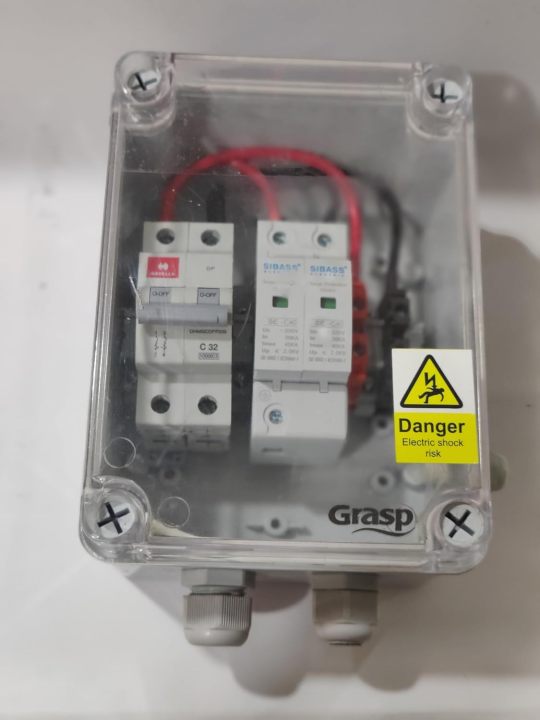
This ACDB is equipped with a Type 2 Surge Protective Device (SPD) and a 32A Miniature Circuit Breaker (MCB) to provide protection for your electrical circuits. This ACDB is an ideal choice for both residential homes and small commercial spaces. With the Type 2 SPD, this ACDB effectively defends against voltage surges and transients, safeguarding your valuable electronics and ensuring their longevity. The 32A MCB in this ACDB serves as a reliable overload protection, disconnecting the circuit in the event of electrical faults and offering peace of mind. This ACDB is designed to withstand dust and moisture, ensuring long-term reliability and protection for your electrical circuits.
MCB Havells 2P 32 A- This AC distribution box provides complete protection and fault prevention for your Solar system or Home. It includes a fast-tripping top brand AC MCB that will quickly de-energize the entire AC circuit in case of overload, short circuit, or excess current.
SPD SIBASS- The top brand AC SPD safeguards your inverter, appliances, and circuits by diverting dangerous voltage surges to ground.
IP65 Rated Box 19X14X11-The durable IP65 rated box is made of superior quality, heat resistant materials with a corrosion-proof and waterproof design suitable for indoor and outdoor use.
Wiring done with 65QMM Cable
For more information contact us:-
Mob - 99712 07863
Email - [email protected]
2 notes
·
View notes
Text
The Role of Battery Storage in Solar and Wind
Introduction to Renewable Energy and Storage Challenges
As the world pivots towards sustainable energy, solar and wind power have become pivotal in reducing our carbon footprint. However, the inherent intermittency of these sources – the sun doesn’t always shine, and the wind doesn’t always blow – poses a significant challenge. Battery storage technologies have emerged as the linchpin in this dynamic, offering a way to harness and hold onto the power generated, making renewable energy more reliable and dispatchable.
The Evolution of Battery Storage Technologies
Battery storage has undergone a transformative evolution, from lead-acid batteries to modern lithium-ion and beyond. The advancements in storage capacity, longevity, and efficiency have propelled the use of batteries to new heights. These technologies now enable large amounts of renewable energy to be stored and released on demand, overcoming the unpredictability of wind and solar energy sources.
Balancing the Grid with Battery Storage
One of the most critical roles of battery storage in the context of renewable energy is grid balancing. Batteries can quickly respond to fluctuations in energy demand and generation, a task that is increasingly important as renewables constitute a larger portion of the energy mix. This rapid response capability supports the stability of the grid and prevents power outages, which are crucial for maintaining the flow of electricity to end users.
Enhancing the Efficiency of Renewable Energy Systems
In solar and wind energy systems, batteries act as a buffer, storing excess energy when production outstrips demand and providing energy when there is a shortfall. This not only maximizes the utilization of renewable installations but also significantly increases their efficiency. As a result, renewable energy projects become more financially viable and competitive against traditional fossil fuel sources.
Battery Storage in Residential and Commercial Applications
Beyond large-scale grid applications, battery storage is also revolutionizing how homes and businesses use renewable energy. Residential and commercial battery systems can store solar energy generated during the day for use at night or during peak demand times when electricity rates are higher. This enables energy independence and can lead to substantial cost savings over time.
The Economic and Environmental Impact of Battery Storage
The coupling of battery storage with renewable energy sources also has profound economic and environmental implications. By smoothing out the supply of renewable energy, storage technologies allow for a greater displacement of fossil-fuel-based generation, leading to reduced greenhouse gas emissions. Economically, this integration can lead to lower energy costs, create jobs in the renewable sector, and stimulate technological innovation.
Looking Towards a Sustainable Future with Battery Storage
The role of battery storage is not just transformative; it is foundational for a sustainable energy future. As we continue to innovate and invest in storage technologies, the full potential of solar and wind energy can be unleashed. This will be critical for meeting global energy demands while mitigating the impacts of climate change. The future of renewables is not just dependent on the energy we can harness today but on the energy we can store for tomorrow.
3 notes
·
View notes